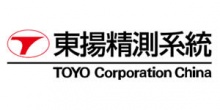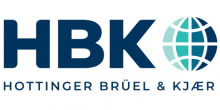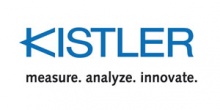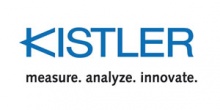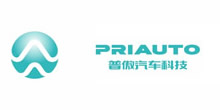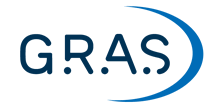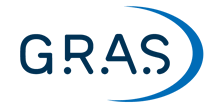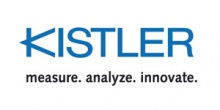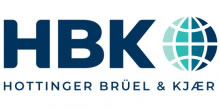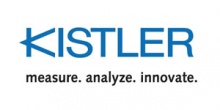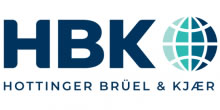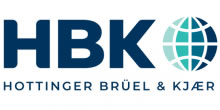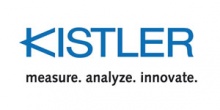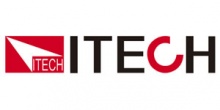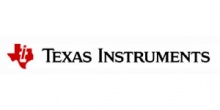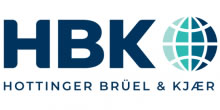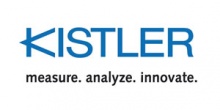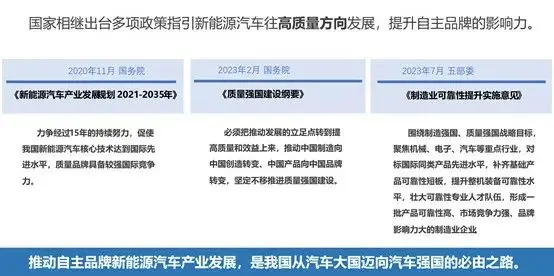首个汽车信息安全ISO国际标准正式发布ISO-SAE 21434
2021年8月31日,ISO国际标准化组织正式发布了ISO/SAE 21434:Road vehicles-Cybersecurity engineering(道路车辆 信息安全工程)标准,该标准定义了针对所有车载电子系统、车辆部件、车载软件及外部网络的网络信息安全工程设计实践/做法。
1 标准发布

标准主要规定了道路车辆电子电气系统及其组件和接口在概念、开发、生产、运行、维护和销毁阶段工程相关的信息安全风险管理要求,标准主要侧重于汽车信息安全流程,并未规定与信息安全相关的具体技术或解决方案。作为当前汽车信息安全领域最重要的国际标准之一,其发布将为汽车全生命周期的信息安全过程管理及信息安全管理体系建设提供有力支撑。
该标准制订工作自2016年1月30日启动,2021年8月发布。由中汽中心牵头组织行业专家正在推进将ISO/SAE 21434国际标准转化为推荐性国家标准《道路车辆 信息安全工程》。
该标准文件由技术委员会ISO/TC 22、道路车辆、小组委员会SC 32、电气和电子部件及通用系统方面以及SAE TEVEES18A车辆信息安全系统工程委员会共同编制。
ISO/SAE 21434第一版取消并替代SAE J3061:2016- Cybersecurity Guidebook for Cyber-Physical Vehicle Systems。
2 ISO/SAE 21434概述
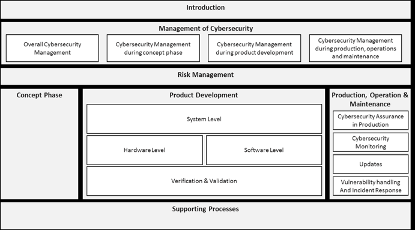
ISO/SAE 21434概览
ISO/SAE 21434侧重于汽车电子产品设计和开发中的网络安全风险。该标准涵盖网络安全治理和结构、车辆整个生命周期的安全工程以及后期生产安全流程。
ISO/SAE 21434的前置ISO标准是ISO 26262“道路车辆-功能安全”。ISO 26262为汽车安全提供了一个生命周期(管理、开发、生产、经营、服务、报废)理念,并在这些生命周期阶段中提供必要的支持。该标准涵盖功能性安全方面的整体开发过程(包括需求规划、设计、实施、集成、验证、确认和配置)。26262不包括软件开发或车辆子系统,也不包括如何处理网络安全事件。
ISO/SAE 21434涵盖了网络安全的各个方面——从车辆的初始设计到报废。供应链也包括在汽车生产的每个步骤中。
ISO/SAE 21434涵盖了连接车辆生命周期的所有阶段,包括电气和电子系统,包括其部件和接口,包括:
• 设计与工程
• 生产
• 客户操作
• 维修保养
• 报废
这种网络安全管理的生命周期方法使ISO/SAE 21434成为连接车辆网络安全最全面的方法之一。
3 对汽车原始设备制造商和开发商的影响
任何制造商、开发人员或OEM都应考虑积极地将ISO/SAE 21434集成到其当前的生产过程中。新标准的主要关注点是网络信息安全。标准的重点是通过规范制造商测试其产品的方式,为汽车消费者提供更好的安全性。
ISO/SAE 21434要求制造商和开发商进行风险评估。在识别风险之前,厂商需要知道是什么导致了风险。评估将识别可能容易受到攻击的任何组件、API或软件功能。完成评估后,应识别漏洞。
对汽车开发商和制造商的影响是,他们可以生产在发布前经过测试的应用程序和组件,这有利于驾驶员和他们的安全。
标准也与其他框架一起工作:在ISO/SAE 21434的情况下,NIST SP-800—30和StAMARDISO/IEC 31010可用于使用尝试和测试的方法建立风险评估的基础。
ISO/SAE 21434标准由汽车利益相关者引入,以解决连接带来的安全问题。该标准为强化安全性提供了一个框架,促进使用更理想的方法构建更安全的车辆。
4 ISO/SAE 21434:2021标准简介
(一)标准一般信息
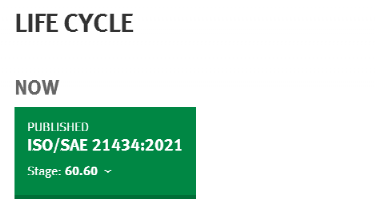
状态:已发布
发布日期:2021-08
版本:第1版
页数:81页
技术委员会:ISO/TC 22/SC 32 Electrical and electronic components and general system aspects(电气和电子元件及一般系统相关)
(二)标准的目的
本文件阐述了道路车辆电气和电子(E/E)系统工程中的信息安全观点。通过确保对信息安全的适当考虑,本文件旨在使电子/电子系统工程跟上最先进的技术和不断发展的攻击方法。
本文档提供了与信息安全工程相关的词汇、目标、要求和准则,作为整个供应链中共同理解的基础。这使组织能够:
• 定义信息安全政策和流程;
• 管理信息安全风险;
• 培养信息安全文化。
本文件可用于实施信息安全管理系统,包括信息安全风险管理。
(三)本文件的组织
图1给出了标准文档结构的概述。图1的元素没有规定各个主题的执行顺序。
标准文件概述
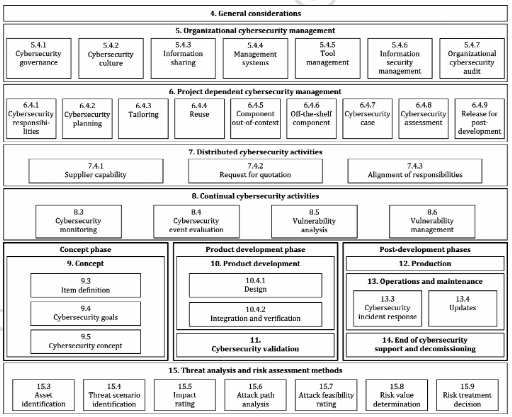
第4条(一般注意事项)仅供参考,包括本文件中道路车辆信息安全工程方法的背景和观点。
第5条(组织信息安全管理)包括组织信息安全政策、规则和流程的信息安全管理和规范。
第6条(项目相关信息安全管理)包括项目层面的信息安全管理和信息安全活动。
第7条(分布式信息安全活动)包括在客户和供应商之间分配信息安全活动责任的要求。
第8条(持续信息安全活动)包括为持续风险评估提供信息的活动,并定义了在信息安全支持结束前电子/电子系统的脆弱性管理(vulnerability management)。
第9条(概念)包括确定项目信息安全风险、信息安全目标和信息安全要求的活动。
第10条(产品开发)包括定义信息安全规范、实施和验证信息安全要求的活动。
第11条(信息安全验证)包括车辆级项目的信息安全验证。
第12条(生产)包括物品或组件制造和组装的信息安全相关方面。
第13条(操作和维护)包括与信息安全事件响应和项目或组件更新相关的活动。
第14条(结束信息安全支持及报废)包括结束项目或组件支持和报废的信息安全考虑因素。
第15条(威胁分析和风险评估方法)包括模块化的分析和评估方法,以确定信息安全风险的程度,从而采取措施。
第5条至第15条有自己的目标、规定(即要求、建议、许可)和工作成果(work products)。工作成果是满足一个或多个相关要求的信息安全活动的结果。
“先决条件”是由前一阶段的工作成果组成的强制性输入,“进一步支持信息”是指可以考虑的信息,可由有别于信息安全活动负责人的来源提供。
条款和工作成果被分配唯一标识符,由两个字母的缩写(“RQ”表示要求,“RC”表示建议,“PM”表示许可,“WP”表示工作成果)组成,后跟两个数字,用连字符分隔。第一个数字表示该条款,第二个数字分别表示该条款的条款或工作成果的连续顺序。例如,[RQ-05-14]指第5条中的第14条规定,这是一项要求。
(四)标准目录
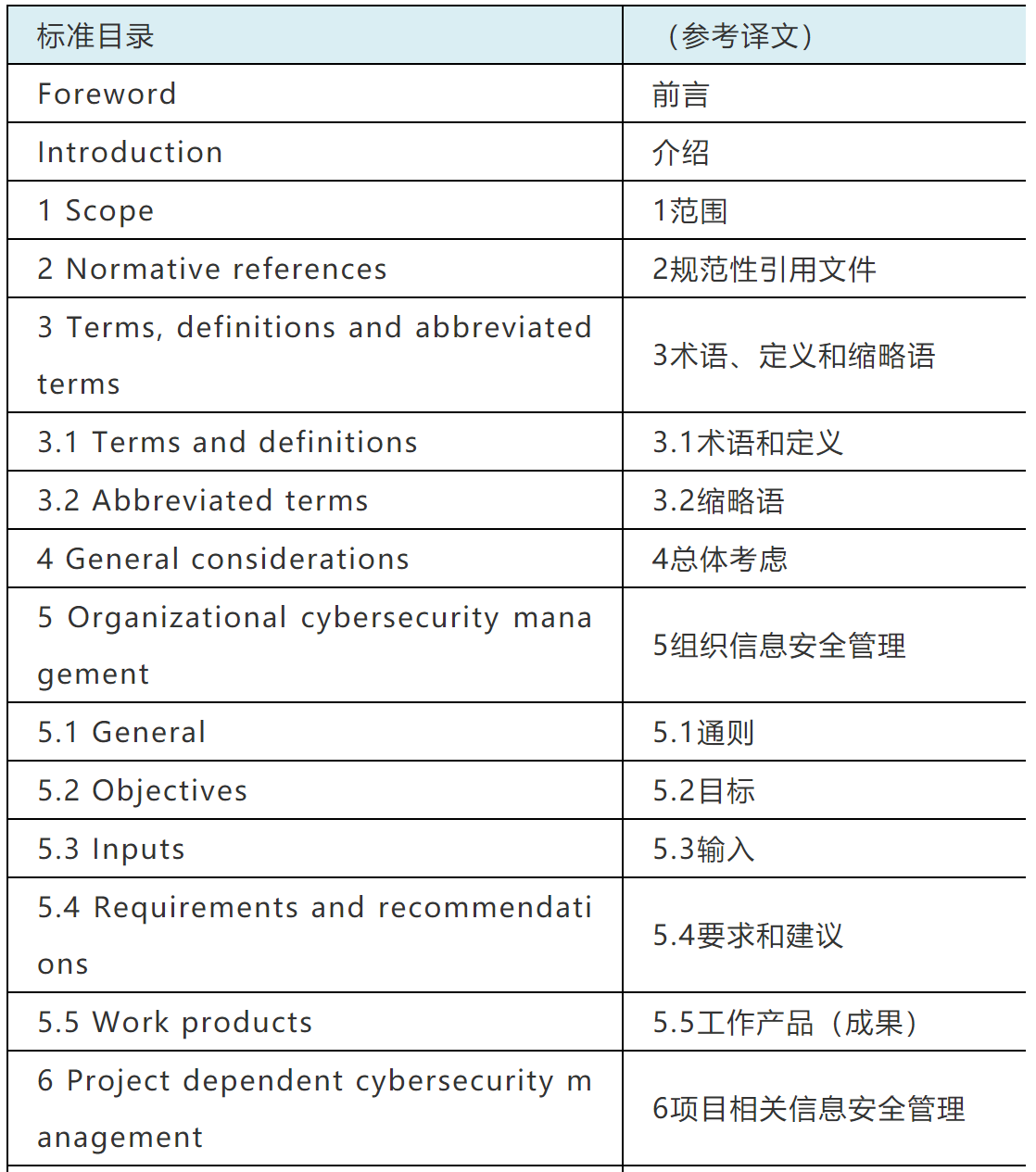
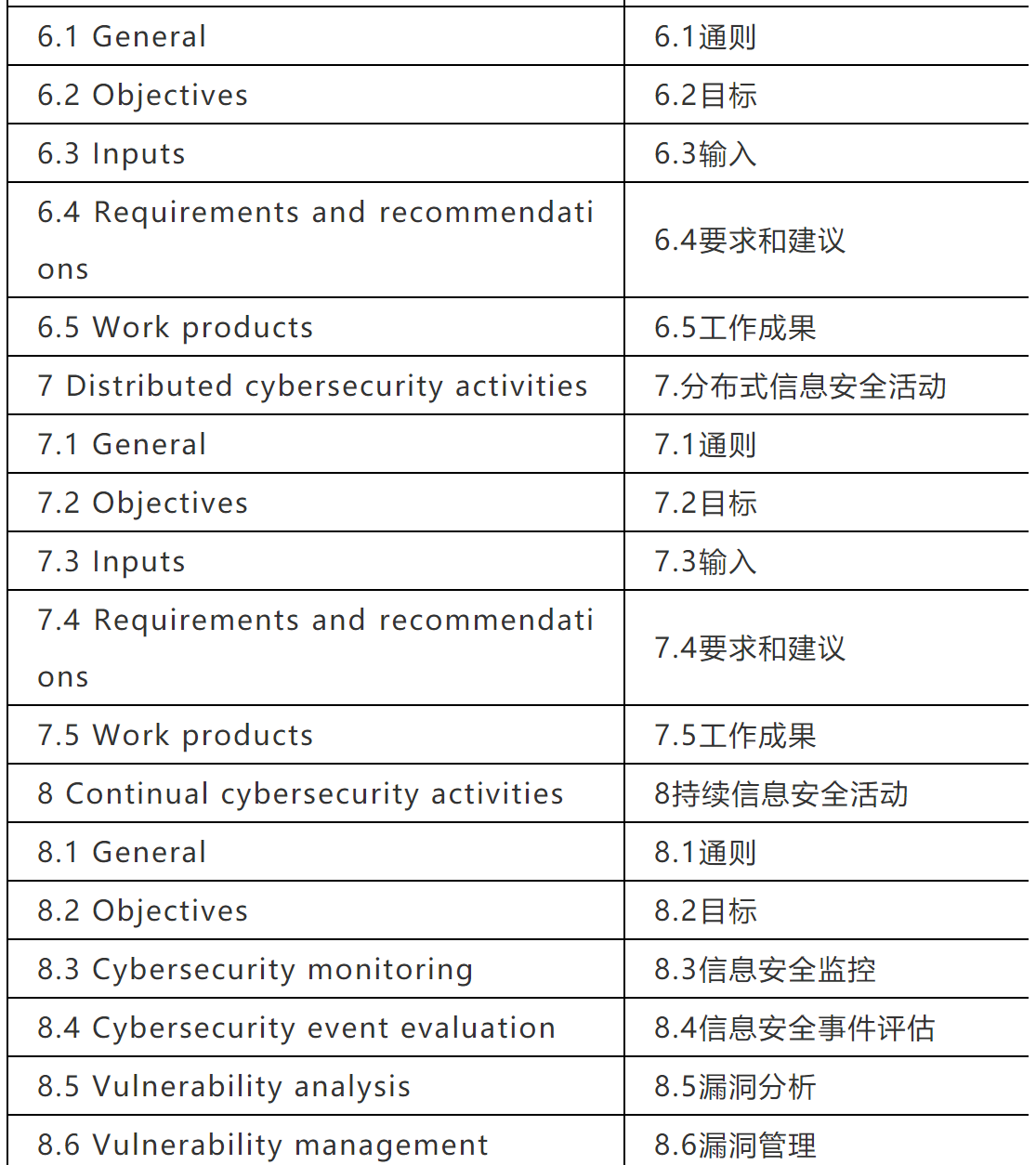
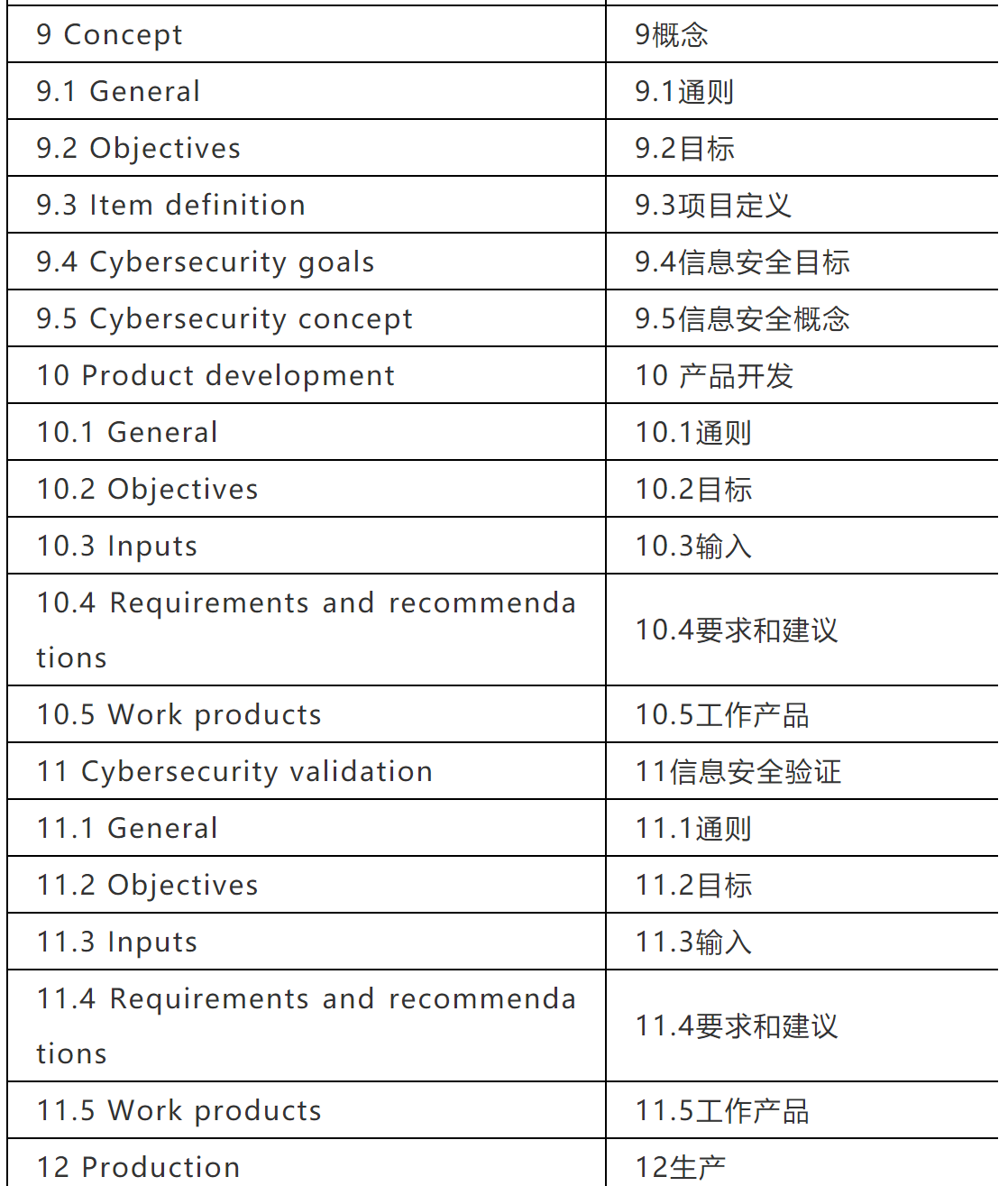
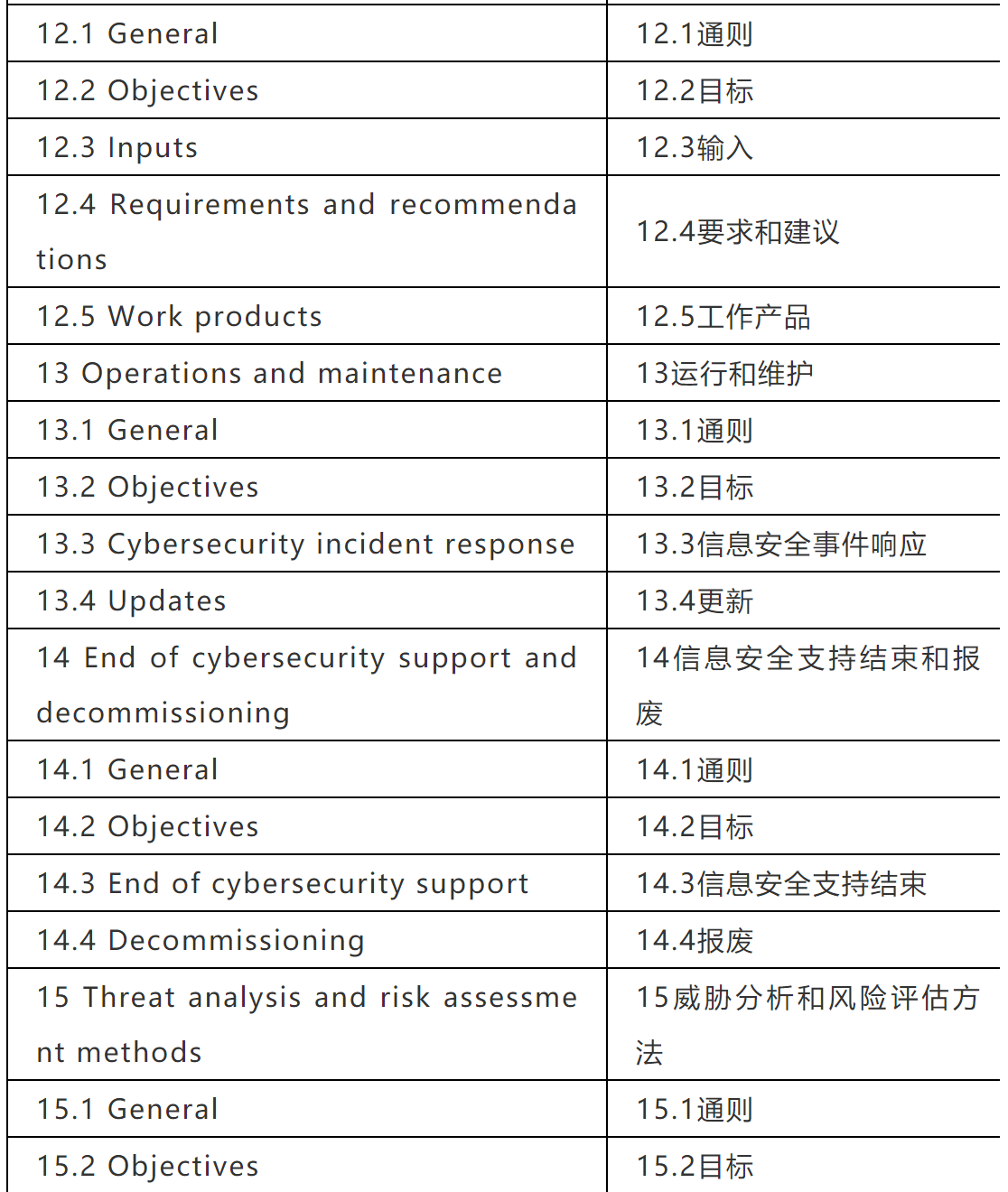
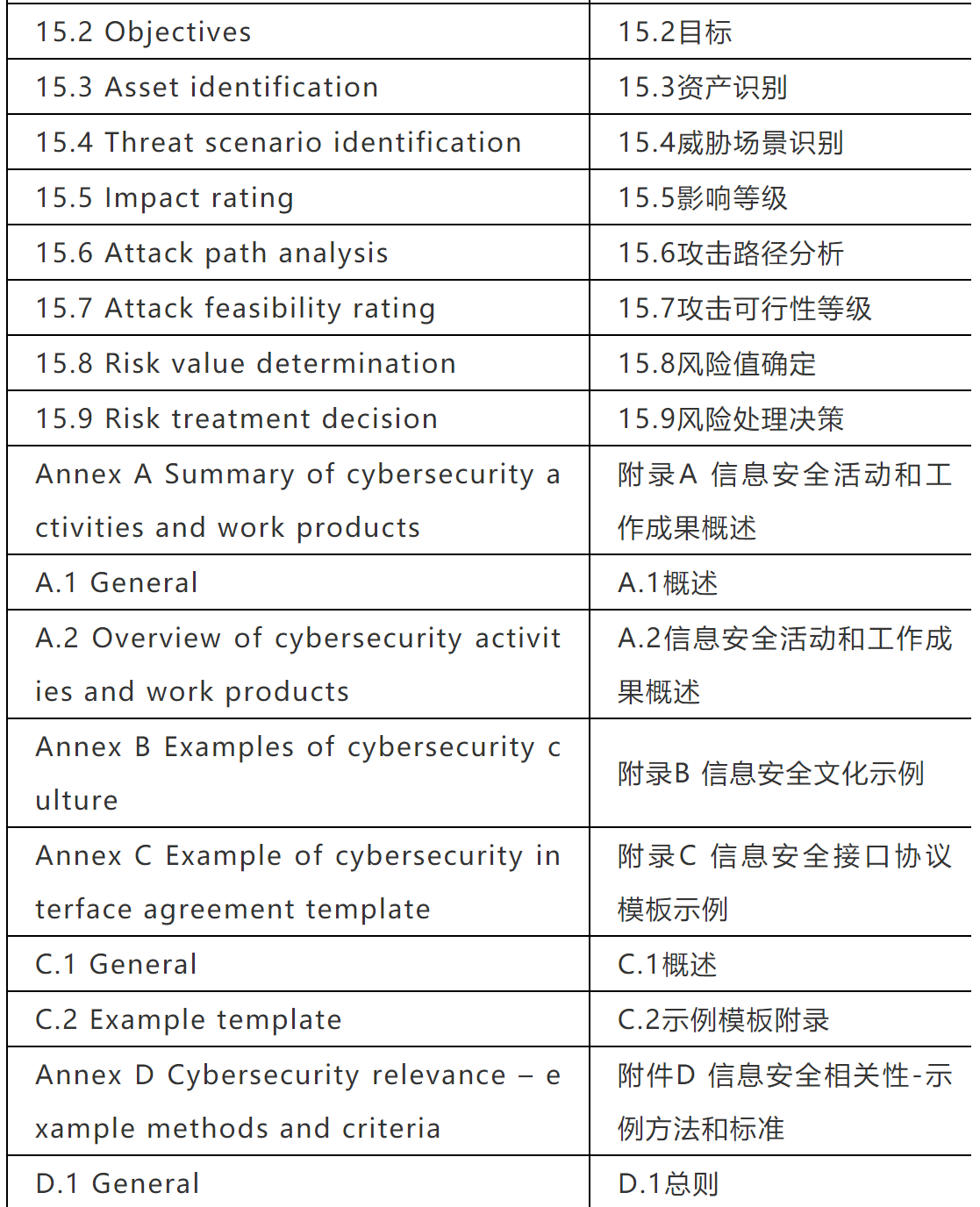


(五)图目录
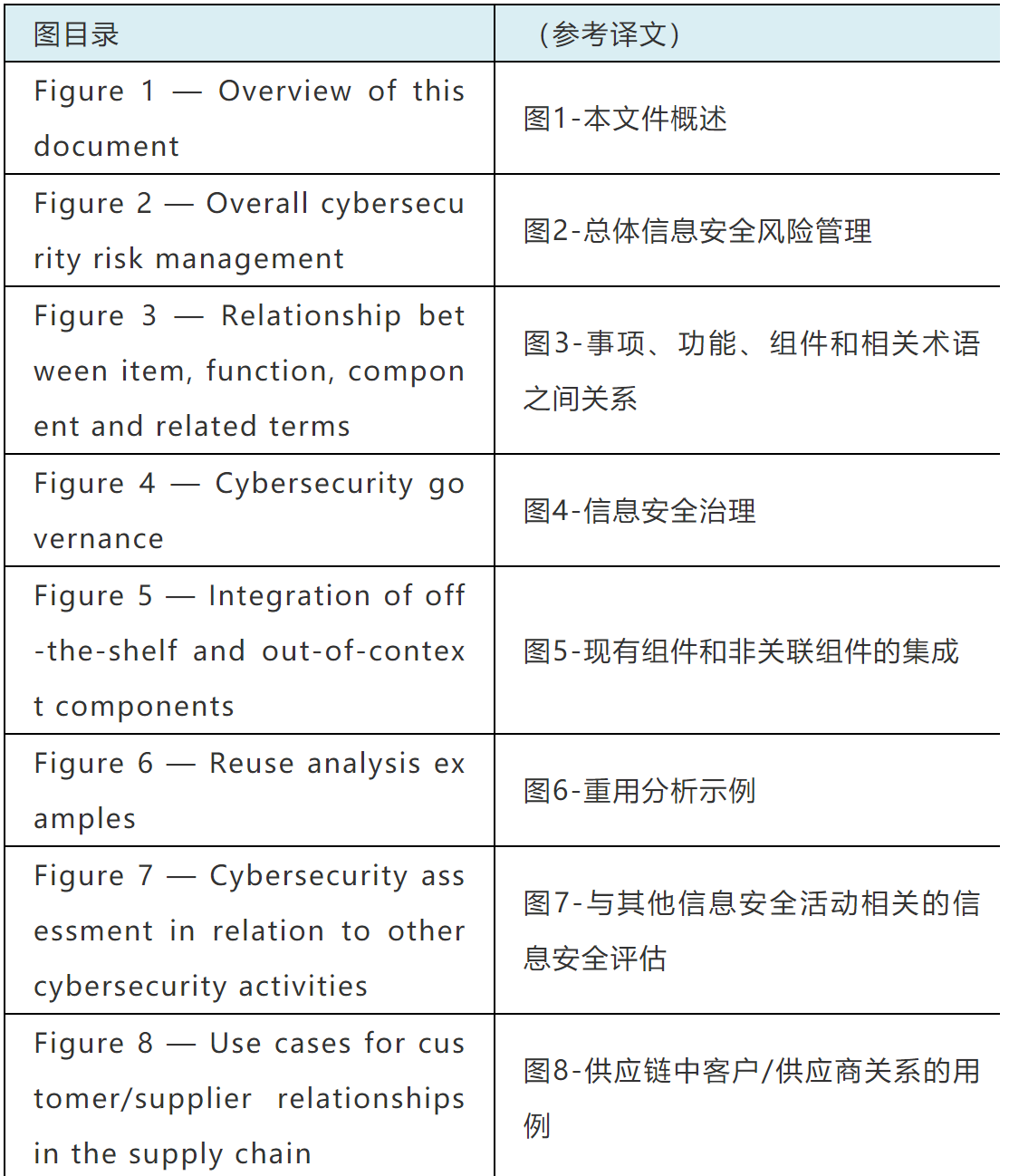
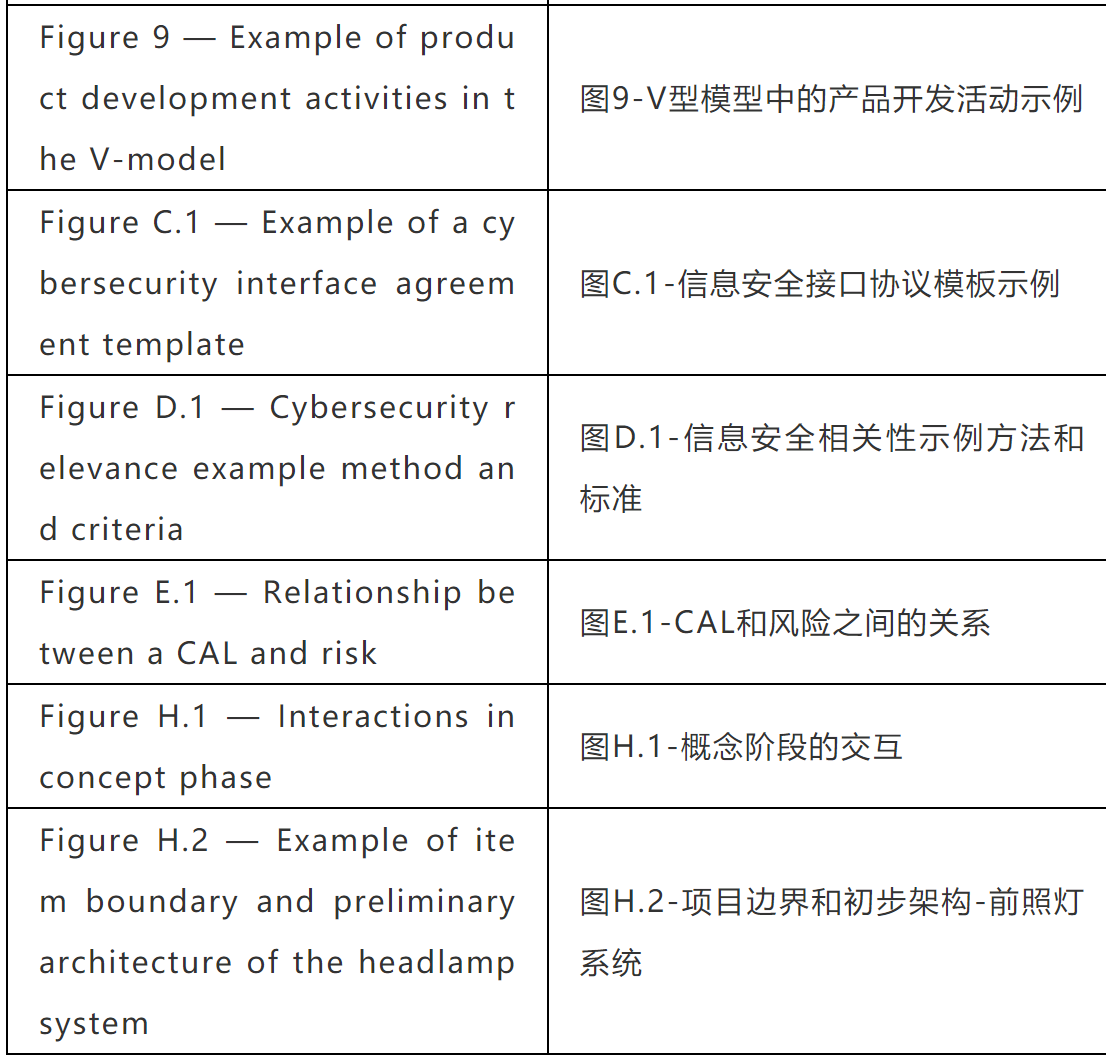
(六)表目录
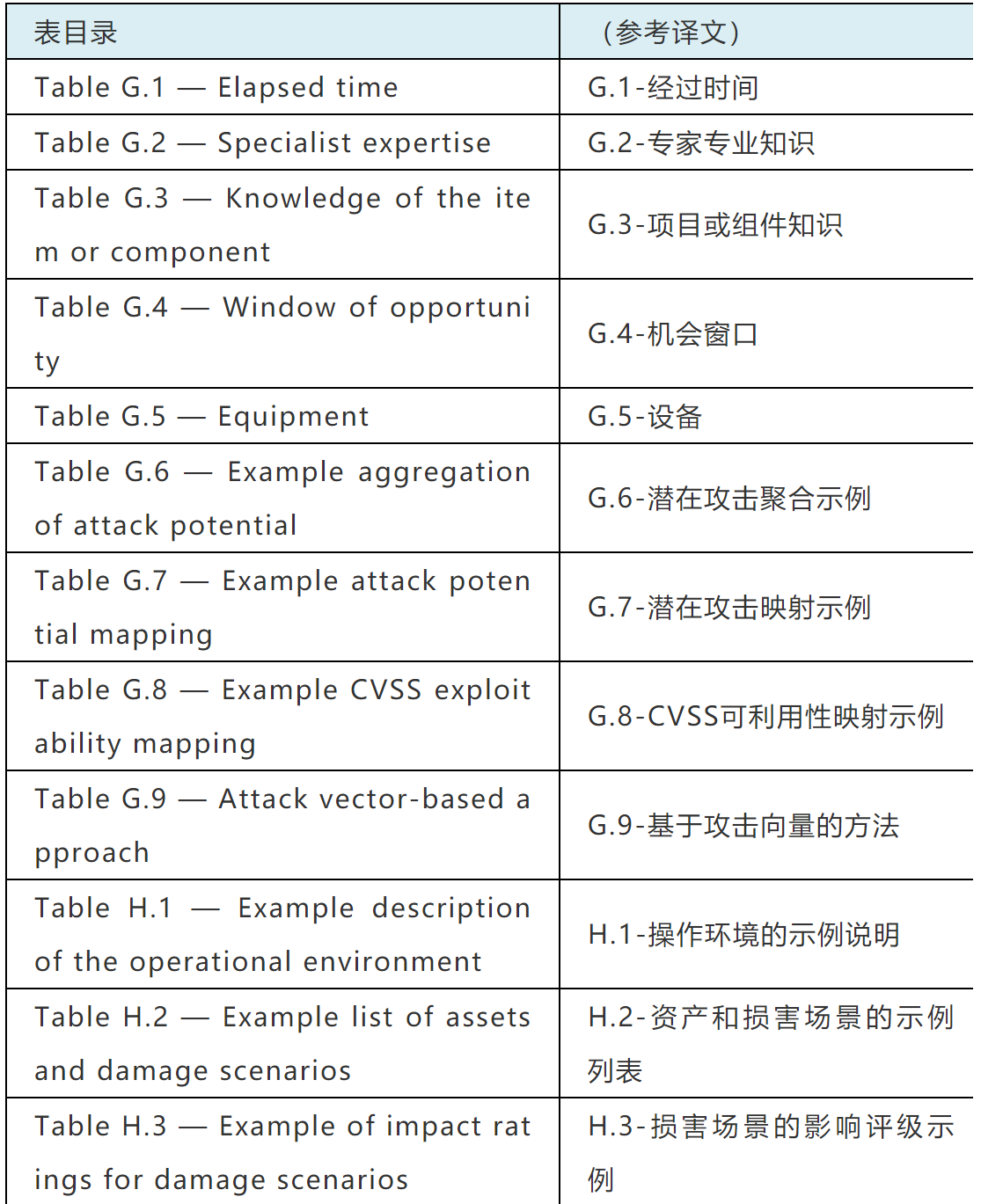

(七)部分标准内容(译文仅供参考):
1.范围
本文件规定了有关道路车辆电气和电子(E/E:electrical and electronic)系统(包括其部件和接口)的概念、产品开发、生产、操作、维护和报废的信息安全风险管理(cybersecurity risk management)工程要求。
定义了一个框架,其中包括信息安全流程的要求以及沟通和管理信息安全风险的通用语言。
本文件适用于在本文件出版后开始开发或修改的系列生产道路车辆E/E系统,包括其部件和接口。
本文件未规定与信息安全相关的具体技术或解决方案。
2.规范性引用文件
ISO 26262-3:2018,Road vehicles — Functional safety — Part 3: Concept phase(道路车辆-功能安全-第3部分:概念阶段)
3.术语、定义和缩写术语/Terms, definitions and abbreviated terms
3.1术语和定义
在本文件中,适用以下术语和定义。
ISO和IEC在以下地址维护用于标准化的术语数据库:
• ISO在线浏览平台:https://www.iso.org/obp
• IEC电子百科全书:https://www.electropedia.org/
3.1.1
architectural design
representation that allows for identification of components (3.1.7), their boundaries, interfaces and interactions
3.1.2
asset
object that has value, or contributes to value
Note 1 to entry: An asset has one or more cybersecurity properties (3.1.20) whose compromise can lead to one or more damage scenarios (3.1.22).
3.1.3
attack feasibility
attribute of an attack path (3.1.4) describing the ease of successfully carrying out the corresponding set of actions
3.1.4
attack path
attack
set of deliberate actions to realize a threat scenario (3.1.33)
3.1.5
attacker
person, group, or organization that carries out an attack path (3.1.4)
3.1.6
audit
examination of a process to determine the extent to which the process objectives are achieved
[SOURCE: ISO 26262-1:2018 [1], 3.5, modified — The phrase “with regard to” was substituted by "to determine the extent to which" and "are achieved" was added.]
3.1.7
component
part that is logically and technically separable
3.1.8
customer
person or organization that receives a service or product
[SOURCE: ISO 9000:2015 [2], 3.2.4, modified — The phrase “could or does receive” was replaced by “receives”, the phrase “that is intended for or required by this person or organization” was omitted, and the example and note 1 to entry were omitted.]
3.1.9
cybersecurity
road vehicle cybersecurity
condition in which assets (3.1.2) are sufficiently protected against threat scenarios (3.1.33) to items (3.1.25) of road vehicles, their functions and their electrical or electronic components (3.1.7)
Note 1 to entry: In this document, for the sake of brevity, the term cybersecurity is used instead of road vehicle cybersecurity.
3.1.10
cybersecurity assessment
judgement of cybersecurity (3.1.9)
3.1.11
cybersecurity case
structured argument supported by evidence to state that risks (3.1.29) are not unreasonable
3.1.12
cybersecurity claim
statement about a risk (3.1.29)
Note 1 to entry: The cybersecurity claim can include a justification for retaining or sharing the risk.
3.1.13
cybersecurity concept
cybersecurity requirements of the item (3.1.25) and requirements on the operational environment (3.1.26), with associated information on cybersecurity controls (3.1.14)
3.1.14
cybersecurity control
measure that is modifying risk (3.1.29)
[SOURCE: ISO 31000:2018 [3], 3.8, modified — The word "cybersecurity" was added to the term, the phrase “maintains and/or” was deleted, the notes to entry were deleted.]
3.1.15
cybersecurity event
cybersecurity information (3.1.18) that is relevant for an item (3.1.25) or component (3.1.7)
3.1.16
cybersecurity goal
concept-level cybersecurity requirement associated with one or more threat scenarios (3.1.33)
3.1.17
cybersecurity incident
situation in the field that can involve vulnerability (3.1.38) exploitation
3.1.18
cybersecurity information
information with regard to cybersecurity (3.1.9) for which relevance is not yet determined
3.1.19
cybersecurity interface agreement
agreement between customer (3.1.8) and supplier concerning distributed cybersecurity activities (3.1.23)
3.1.20
cybersecurity property
attribute that can be worth protecting
Note 1 to entry: Attributes include confidentiality, integrity and/or availability.
3.1.21
cybersecurity specification
cybersecurity requirements and corresponding architectural design (3.1.1)
3.1.22
damage scenario
adverse consequence involving a vehicle or vehicle function and affecting a road user (3.1.31)
3.1.23
distributed cybersecurity activities
cybersecurity activities for the item (3.1.25) or component (3.1.7) whose responsibilities are distributed between customer (3.1.8)and supplier
3.1.24
impact
estimate of magnitude of damage or physical harm from a damage scenario (3.1.22)
3.1.25
item
component or set of components (3.1.7) that implements a function at the vehicle level
Note 1 to entry: A system can be an item if it implements a function at the vehicle level, otherwise it is a component.
[SOURCE: ISO 26262-1:2018 [1], 3.8, modified — The term “system” has been replaced by “component”, the phrases “to which ISO 26262 is applied” and “or part of a function” have been omitted and the Note 1 to entry has been replaced.]
3.1.26
operational environment
context considering interactions in operational use
Note 1 to entry: Operational use of an item (3.1.25) or a component (3.1.7) can include use in a vehicle function, in production, and/or in service and repair.
3.1.27
out-of-context
not developed in the context of a specific item (3.1.25)
EXAMPLE:
Processing unit with assumed cybersecurity requirements to be integrated in different items.
3.1.28
penetration testing
cybersecurity testing in which real-world attacks are mimicked to identify ways to compromise cybersecurity goals (3.1.16)
3.1.29
risk
cybersecurity risk
effect of uncertainty on road vehicle cybersecurity (3.1.9) expressed in terms of attack feasibility (3.1.3) and impact (3.1.24)
3.1.30
risk management
coordinated activities to direct and control an organization with regard to risk (3.1.29)
[SOURCE: ISO 31000:2018 [3], 3.2]
3.1.31
road user
person who uses a road
EXAMPLE:
Passenger, pedestrian, cyclist, motorist, or vehicle owner.
3.1.32
tailor,verb
to omit or perform an activity in a different manner compared to its description in this document
3.1.33
threat scenario
potential cause of compromise of cybersecurity properties (3.1.20) of one or more assets (3.1.2) in order to realize a damage scenario (3.1.22)
3.1.34
triage
analysis to determine the relevance of cybersecurity information (3.1.18) to an item (3.1.25) or component (3.1.7)
3.1.35
trigger
criterion for triage (3.1.34)
3.1.36
validation
///confirm/i/i/iation, through the provision of objective evidence, that the cybersecurity goals (3.1.16) of the item (3.1.25) are adequate and are achieved
[SOURCE: ISO/IEC/IEEE 15288:2015 [4], 4.1.53, modified — The phrase “requirements for a specific intended use or application have been fulfilled” has been replaced by “cybersecurity goals of the item are adequate and are achieved”, note 1 to entry has been omitted.]
3.1.37
verification
///confirm/i/i/iation, through the provision of objective evidence, that specified requirements have been fulfilled
[SOURCE: ISO/IEC/IEEE 15288:2015 [4], 4.1.54, modified — The note 1 to entry has been omitted.]
3.1.38
vulnerability
weakness (3.1.40) that can be exploited as part of an attack path (3.1.4)
[SOURCE: ISO/IEC 27000:2018 [5], 3.77, modified — The phrase “of an asset or control” has been omitted; the phrase “by one or more threats” has been replaced by “as part of an attack path”.]
3.1.39
vulnerability analysis
systematic identification and evaluation of vulnerabilities (3.1.38)
3.1.40
weakness
defect or characteristic that can lead to undesirable behaviour
EXAMPLE 1:Missing requirement or specification.
EXAMPLE 2:Architectural or design flaw, including incorrect design of a security protocol.
EXAMPLE 3:Implementation weakness, including hardware and software defect, incorrect implementation of a security protocol.
EXAMPLE 4:Flaw in the operational process or procedure, including misuse and inadequate user training.
EXAMPLE 5:Use of an outdated or deprecated function, including cryptographic algorithms.
3.2缩略语
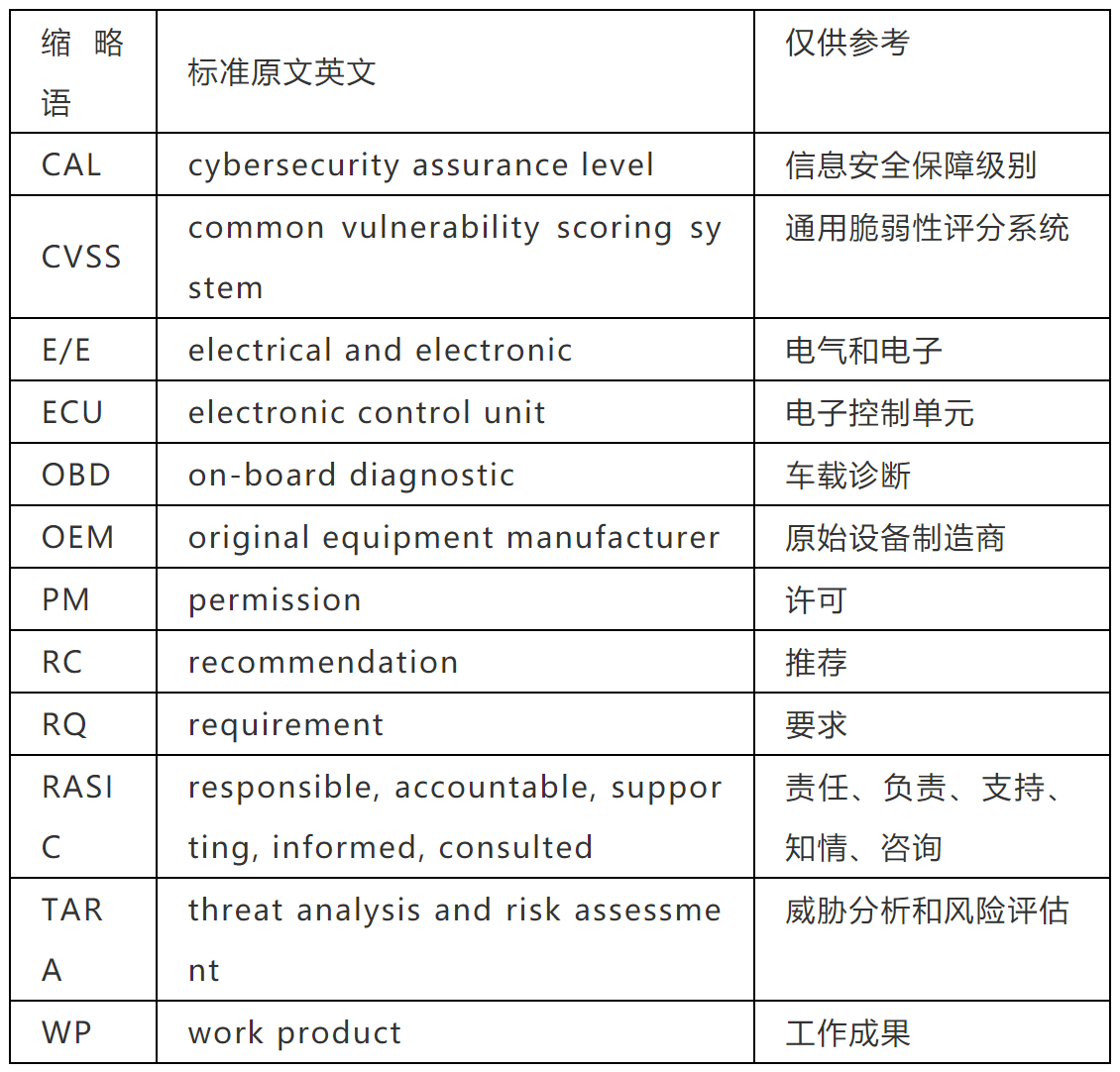
编辑推荐
最新资讯
-
大卓智能端到端直播实测,16公里复杂路段挑
2025-04-25 17:16
-
《汽车轮胎耐撞击性能试验方法-车辆法》等
2025-04-25 11:45
-
“真实”而精确的能量流测试:电动汽车能效
2025-04-25 11:44
-
GRAS助力中国高校科研升级
2025-04-25 10:25
-
梅赛德斯-AMG使用VI-CarRealTime开发其控制
2025-04-25 10:21





 广告
广告




